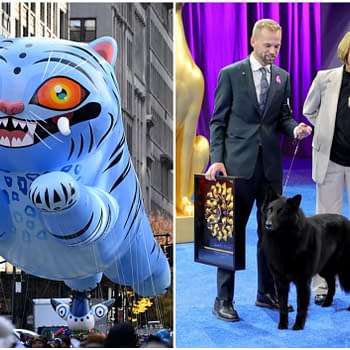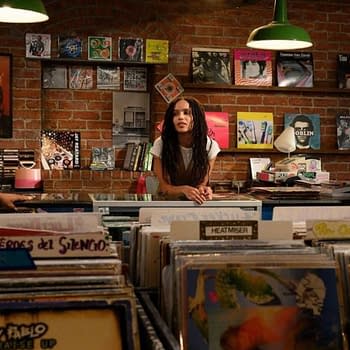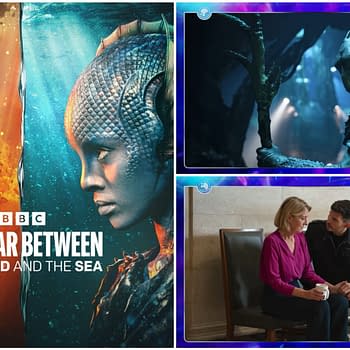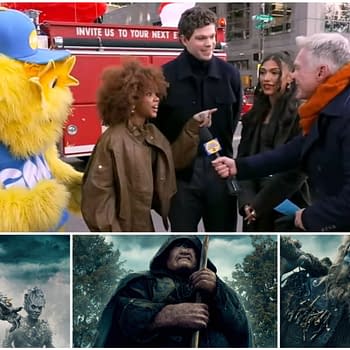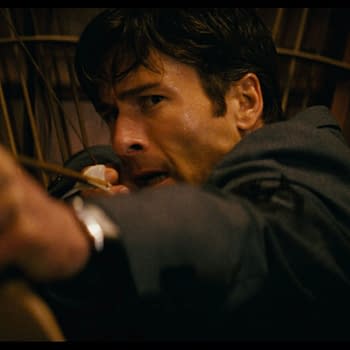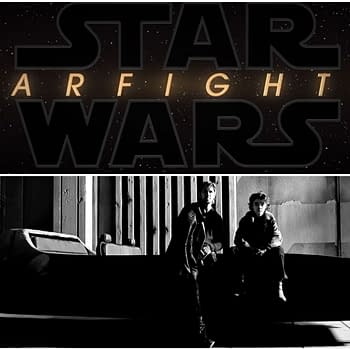Posted in: Current News, Editor's Picks TV News, HBO, Movies, Trailer, TV, YouTube | Tagged: app, apps, Beau Bridges, cable, casey silver, Devin Ratray, drama, ed solomon, Frederick Weller, garrett hedlund, HBO, interactive, James Ransone, Jennifer Ferrin, Jeremy Bobb, Maya Kazan, Michael Cerveris, Mosaic, murder, Mystery, paul reubens, Sharon Stone, steven soderbergh, streaming, television, tv
Mosaic: HBO Releases App For Soderbergh's Interactive Series
Though director Steven Soderbergh's interactive limited series Mosaic doesn't air on HBO until January 22, 2018, the first stage of the experience took place today with the launching of the show's official app. Developed for the cabler by Soderbergh and Casey Silver; and based in conjunction with writer Ed Solomon, the app will allow users to build their own storylines and points of view and compare to the full version when it premieres next year.
Presented by media tech company PodOp, the Mosaic app is a free download for iPhone, iPad and Apple TV (with a free Android app coming soon). Here is the first official trailer for the limited series and see for yourself:
"Users are introduced to Stone's Olivia Lake, a famed children's book author/illustrator, and two men who will play important roles in her life: Joel (Hedlund), a handyman and aspiring artist, and Eric (Weller), a suitor whose motives may not be genuine. Once the introductions are complete, users must decide whether to follow the next portion of the story from Joel's or Eric's perspective. Along the way, they'll meet a number of new characters with their own versions of the story to tell."
Mosaic stars Sharon Stone, Garrett Hedlund, Frederick Weller, Beau Bridges, Paul Reubens, Jennifer Ferrin, Devin Ratray, Michael Cerveris, James Ransone, Jeremy Bobb and Maya Kazan.
Still confused? Let's leave it to Soderbergh to explain exactly how Mosaic works:
● Mosaic having a "branching narrative" will allow viewers to see what's happening from a number of different personal perspectives:
"It's a branching narrative piece. Branching narratives have been around forever, but technology now allows, I hope, for a more elegant, intuitive form of engagement than used to be possible. We spent a lot of time on how you touch this thing. I wanted to make sure that it was beautiful and simple, so that when the opportunity arises for you to decide whose perspective you want to follow, it feels organic and not like an interruption—like the thing is just stopping cold. So there was just a lot trial and error about how that would work. I'm really happy with it now. The question now is if a million people log on at the same time, will it crash? It's supposed to come out in November."
● Mosaic premiered as a free app before moving to HBO, but you'll be able to watch it a number of different ways…which is good when you consider how long the experience could actually take:
"For your phone, iPad, desktop, Apple TV. Anything. We started thinking we'll just do iOS. But after long series of conversations, we said it makes no sense while we're building this thing not to include Android and desktop. While we have the hood open, don't we want as many eyeballs on this thing as possible? And it's a free app. So set aside your time, because if you watch all the various nodes, it's like seven and a half hours. I was very aware while we were making it that this is the cave painting of this format—that somebody else is going to take this thing and push it way further. I was just trying to get a working story. Ed Solomon, who wrote Mosaic, has another piece that's built on what we did and is going to be much more complex."
● The Mosaic app will be broken-up into chapters; and when a chapter ends, the viewer has the option where they want to go from there and from which perspective. But unlike a "choose-your-own-adventure" narrative, Mosaic has one story from beginning-to-end but there are a number of perspectives to watch the action unfold through.
● So what's the story about? Murder…but maybe not much of a mystery:
"It's a murder. Not a murder mystery so much. There are two different time frames, one contemporary and one four years ago. This case that everyone thought was solved gets reexamined with interesting results. So you get to go back and forth depending on who you want to follow at what point. It seemed to be a kind of story that benefited from this multiverse perspective. The writing and the editing of it was tricky. The giant board that Ed and I had was a real head-scratcher."








